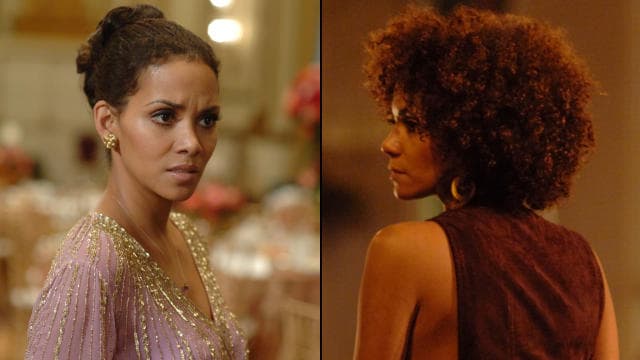
Delving into the depths of “Frankie & Alice,” the 2014 cinematic venture featuring Halle Berry, we delve into an authentic narrative inspired by genuine encounters with dissociative identity disorder (DID).
Unveiling the true tale of Chris Costner Sizemore, the woman at the center of the diagnosis, the film draws its essence from “The Three Faces of Eve,” providing a distinctive outlook on the complexities inherent in DID.
Frankie and Alice Book: Unmasking Authenticity
While “Frankie & Alice” weaves a fictional narrative, it roots itself in the genuine experiences of Chris Costner Sizemore, diagnosed with DID in the 1950s. The story first unfolded in the pages of “The Three Faces of Eve,” a collaboration between Corbett H. Thigpen and Hervey M. Cleckley, subsequently becoming the cornerstone for the 1957 film adaptation.
Exploring the contents of the Frankie and Alice Book grants readers an unfiltered look into the intricacies of DID, illuminating the authentic origins of the film.
Distinctive Insights into “The Three Faces of Eve” – The Book:
- Historical Roots: Published in 1957, “The Three Faces of Eve” is rooted in the true experiences of Chris Costner Sizemore. Co-authored by Corbett H. Thigpen and Hervey M. Cleckley, this groundbreaking book played a pivotal role in psychiatric literature for its candid exploration of DID;
- In-Depth Psychiatric Examination: Esteemed psychiatrists Thigpen and Cleckley conducted extensive evaluations of Chris Costner Sizemore, documenting her DID experiences. The book offers a unique and detailed perspective on the clinical examination and treatment process, enriching the understanding of DID;
- Narrative Style: Unfolding in a captivating manner, the narrative presents the psychological journey of Chris Costner Sizemore. The authors employ a compelling storytelling approach, blending clinical observations with the protagonist’s personal struggles, providing readers with a gripping account of DID complexities;
- Impact on Psychiatry: Significantly influencing psychiatry, “The Three Faces of Eve” contributed to a broader awareness of dissociative identity disorder. Dispelling misconceptions, the book paved the way for nuanced discussions about DID in both medical and public spheres;
- Literary Endurance: Standing the test of time, “The Three Faces of Eve” remains a seminal work in psychiatric literature. Its enduring legacy lies in humanizing the experiences of individuals with DID and shaping public perceptions of mental health;
- Adaptation Influence: The book’s success laid the foundation for subsequent adaptations, including the 1957 film and the 2010 production “Frankie & Alice.” Its compelling narrative serves as a reference point for mental health discussions in literature and popular culture;
- Patient Empowerment: Through Chris Costner Sizemore’s lens, “The Three Faces of Eve” underscores the importance of patient empowerment and resilience in mental health challenges, emphasizing the potential for healing and self-acceptance;
- Multifaceted Exploration: Beyond clinical aspects, the Frankie and Alice book delves into DID’s impact on relationships, identity, and personal growth. It offers a multifaceted exploration of the human experience, transcending psychiatric literature boundaries to resonate with a broader audience.
Exploring “The Three Faces of Eve” unveils not just the clinical dimensions of DID but also the human stories shaping psychiatric narratives. The book’s enduring relevance lies in its capacity to educate, empathize, and foster understanding of the intricate nature of mental health.
Halle Berry’s Authentic Portrayal
Halle Berry’s portrayal of Frankie Murdoch in “Frankie & Alice” has earned acclaim for its genuine and profound representation.
Collaborating closely with mental health professionals and individuals experiencing DID, Berry devoted herself to accurately conveying the inherent challenges. The film’s alignment with real-life experiences weaves a tapestry that resonates with audiences seeking authentic depictions of mental health struggles.
Check the trailer of movie here
Authentic DID Treatment and Real-Life Struggles
While Frankie Murdoch is a fictionalized rendition of Chris Costner Sizemore, the film’s portrayal of DID and the treatment process is firmly grounded in actual experiences.
Consultations with psychology experts ensured sensitivity and accuracy in depicting the complexities of living with DID. The treatment journey, involving psychotherapy, medication, and diverse support forms, is outlined as a challenging yet essential process for those striving to integrate their personalities and manage symptoms.
Critical Acclaim and Fan Sentiments
Critics and fans alike have praised “Frankie & Alice” for its poignant exploration of mental health issues. Berry’s performance is lauded as a powerful and authentic portrayal, capturing the nuances of DID with grace. Fans appreciate the film’s dedication to raising awareness and fostering empathy for individuals living with mental health conditions.
The film is commended for challenging stereotypes and contributing to a nuanced understanding of DID, emphasizing that mental health stories warrant careful and compassionate representation in the media.
Comparing Frankie and Alice: Cinematic vs. Literary
The juxtaposition of “Frankie & Alice” as a film and its literary source, “The Three Faces of Eve,” invites scrutiny from both critics and fans. While the film takes creative liberties, it effectively translates the book’s essence to the screen.
Fans value the cinematic adaptation for breathing life into the written narrative, while critics engage in discussions about adapting complex mental health stories for a broader audience. The dynamic between the two mediums provides a fascinating lens to explore the multifaceted nature of storytelling and its impact on perceptions of mental health.
Conclusion
“Frankie & Alice” stands as a testament to the delicate interplay between fiction and reality, offering an authentic portrayal of DID. The critical acclaim and fan appreciation underscore the importance of cinematic narratives that bring awareness, empathy, and understanding to the complexities of disorders like DID.